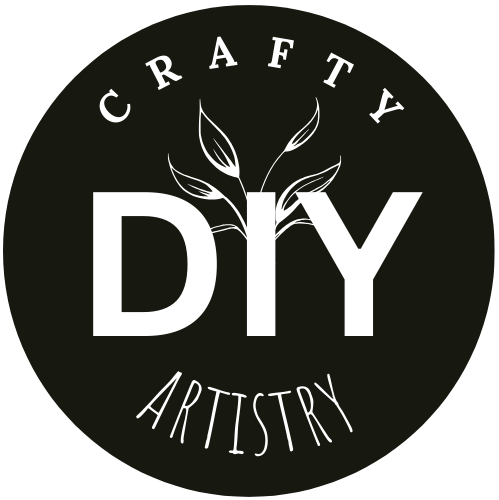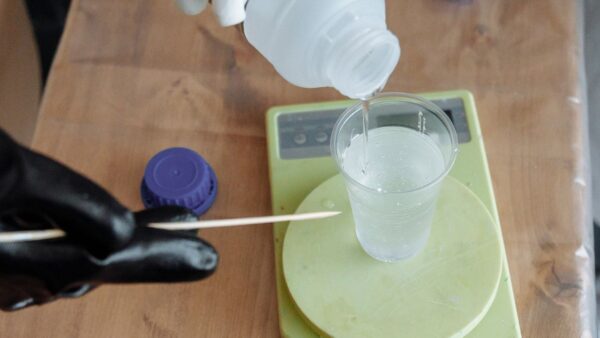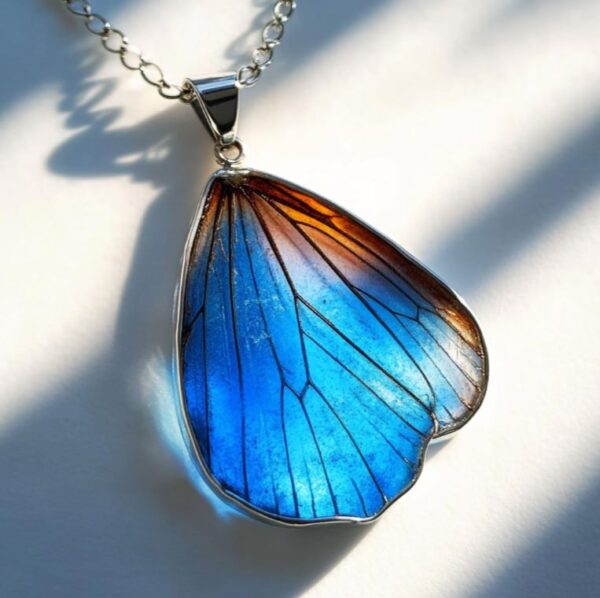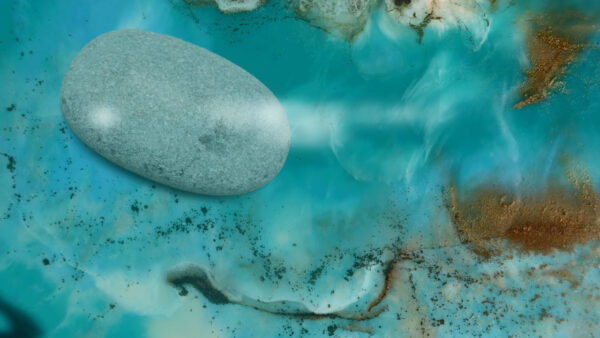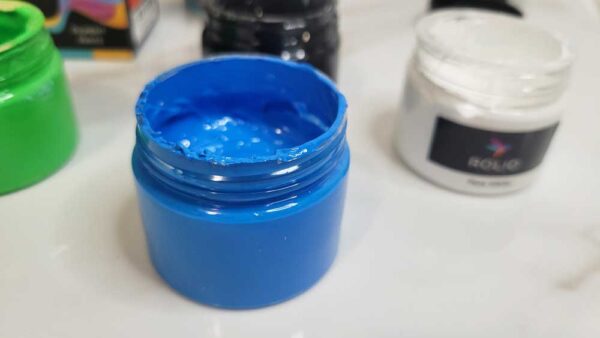Is Resin Toxic? All about non-toxic resin
In this article, we are going to discuss your common questions: Is resin toxic? Can resin make you sick? And where do you find non-toxic resin?
Epoxy resin and UV resin are extremely popular to work with due to their easy to use nature, clarity and hard surface.
Over the past few years crafters have really taken to this medium to make all kinds of things from jewelry to huge river tables. That means there’s a lot of people who are searching for the safest epoxy resin.
As we use this type of material, it’s important to address a common query that echoes through the crafting community: Is resin toxic? Let’s take a look at epoxy resin safety.
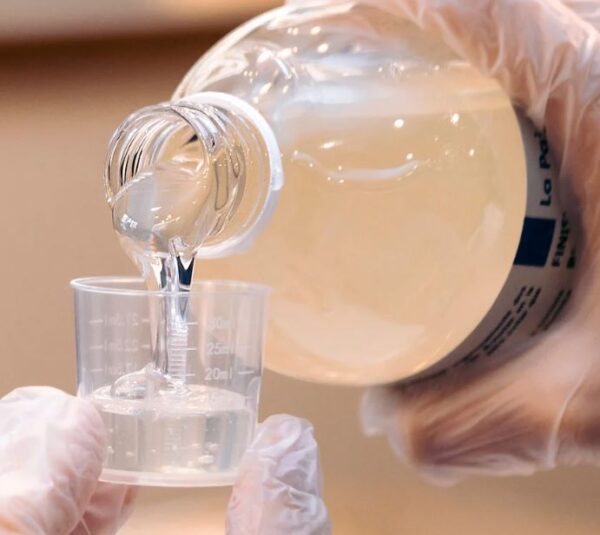
This blog post will make resin easier to understand, giving you creative ideas and practical safety tips for using this fun material.
Crafting with resin opens doors to many DIY crafting ideas – from stunning epoxy art pieces to glossy resin tabletops and intricate resin jewelry. However, the creative journey is accompanied by responsibility.
In this guide, we’ll talk about resin toxicity, providing insights into the types of resin, safety precautions, and practical tips. We’ll also discuss some alternatives for those of you who decide that it’s just not worth it.
Is Resin Toxic?
You are looking for the safest resin to use, we are too! The toxicity of resin depends on the specific type and composition of the resin, as well as the precautions taken during its use. Note that we are talking about epoxy and UV resin, and not resin adhesives.
In general, fully cured resin is considered non-toxic and safe for common applications. However, during the application and curing process, certain resins may release fumes or vapors that can be irritating or harmful if inhaled in excessive quantities. This can cause resin sickness.
Users should also be aware of specific safety considerations related to the type of resin being used, such as epoxy, polyester, or UV resin, and take necessary resin safety precautions accordingly.
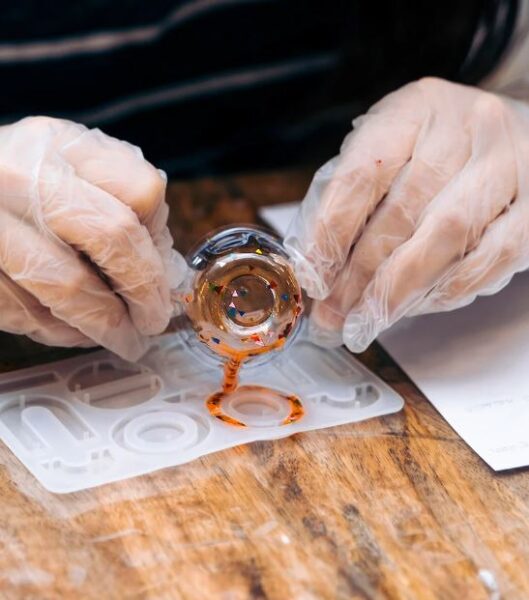
Most Common Types Of Resin Crafters Use
Let’s delve into the world of resin crafting by first talking about the most common types of resin that crafters use.
Understanding these resin varieties is a first step in working with resin while also being aware of potential safety considerations. See our complete guide of Common Types Of Resin & Uses.
Here are the three most common types of resin that are used for DIY crafting & home projects.
Epoxy Resin:
Epoxy resin is widely popular in crafting due to its versatility and user-friendly nature. It consists of two components, a resin and a hardener, which must be mixed in precise ratios.
Epoxy resin is known for its crystal-clear finish, excellent adhesion, and resistance to yellowing over time.
Crafters often choose epoxy resin for projects like jewelry making, coating surfaces, or creating vibrant, glossy artworks. It’s also one of the most popular resins for making resin coasters.
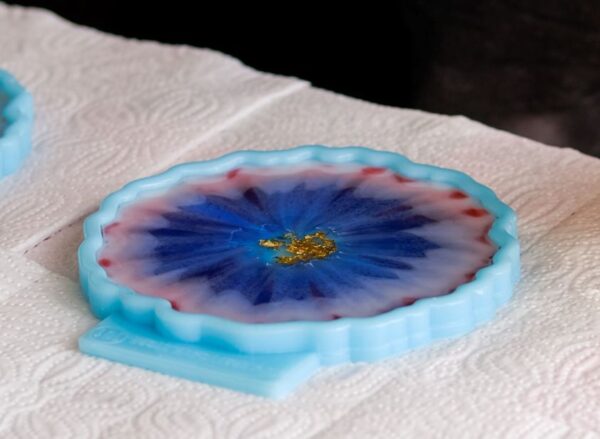
UV Resin:
UV resin, or ultraviolet resin, is a type of resin that cures or hardens when exposed to ultraviolet (UV) light.
This type of resin has gained popularity in crafting and DIY projects due to its rapid curing process and the absence of the need for mixing various components.
UV resin typically comes in a liquid form and is activated by exposure to UV light, either from the sun or a specialized UV lamp. See our guide on how to use UV resin.
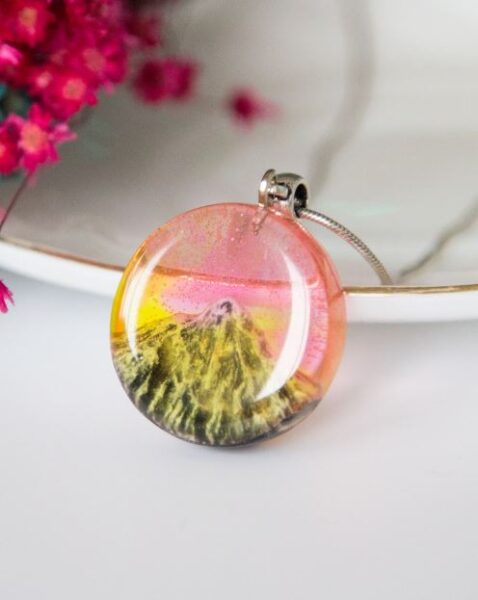
Casting Resin
Casting resin refers to a type of resin specifically formulated for casting applications, where the material is poured into molds to create three-dimensional objects or replicas.
This resin is designed to capture intricate details, cure evenly, and produce durable and clear results.
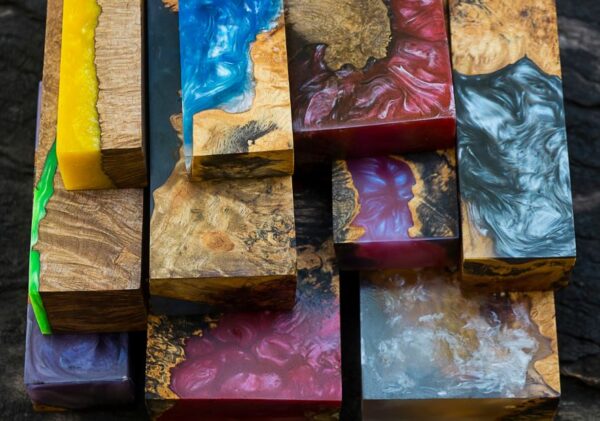
So this guide will be talking about these types of resins, keeping in mind that there are many different resins to choose from out there.
Using Resin & Stages Of Application
The question of whether resin is toxic hinges on the type of resin and the stages of its application.
In its fully cured state, resin is generally considered non-toxic, as the chemical reactions that occur during the curing process render it inert.
However, during the application and curing phases, especially with certain types like epoxy or casting resin, there is a potential for the release of fumes or vapors that may contain volatile organic compounds (VOCs) or other components.
Inhaling these fumes in excessive amounts can be irritating or pose health risks, emphasizing the importance of proper safety measures.
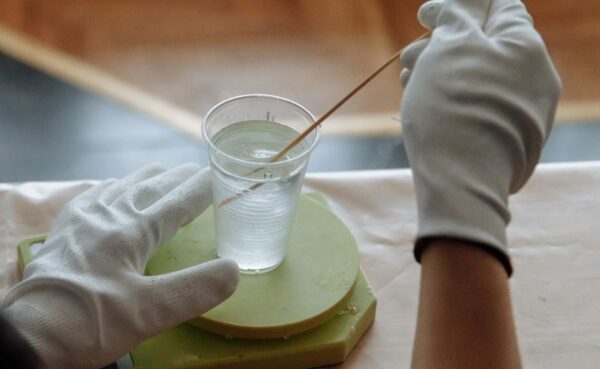
To mitigate potential risks, work in a well-ventilated space to disperse fumes.

Adhering to the safety guidelines provided by the resin manufacturer is a must, as it offers specific recommendations tailored to the characteristics of the resin being used.
Understanding the different resin types, such as epoxy, polyester, or UV resin, allows crafters and artists to take informed precautions. So that you have a safe and enjoyable creative process while minimizing any potential health concerns associated with the use of resin.
Skin Contact & Allergies
Skin contact with uncured resin can pose potential risks, as some individuals may be sensitive or develop allergic reactions to specific components present in the resin.
It is essential to wear protective gear, including gloves, to prevent direct contact with the skin during the crafting process. If you do get resin onto the skin, check our guide on how to get resin off of hands and skin.
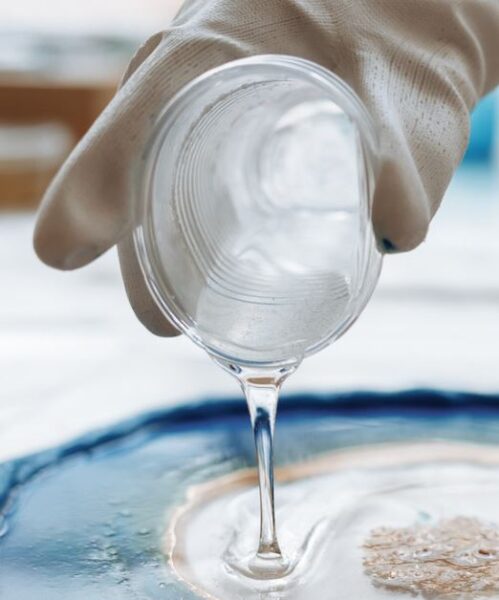
In the event of accidental contact, promptly washing the affected area with soap and water will help minimize the risk of skin irritation or allergic reactions.
Regulations & Requirements
Resin crafting involves awareness of relevant regulations and compliance standards to ensure both user safety and environmental responsibility.
Manufacturers often adhere to specific guidelines and industry standards, emphasizing the importance of using resin products that meet regulatory requirements. But some do not.
Familiarizing oneself with regional regulations concerning the use and disposal of resin waste is important, promoting responsible crafting practices.
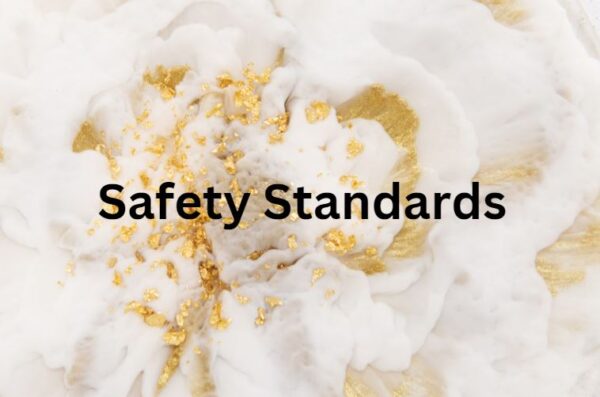
Compliance with safety standards not only underscores the commitment of reputable resin brands to user welfare but also contributes to the overall reliability of resin-based projects.
No matter what type of resin you are using, always check the safety data sheets of the brand. Reputable brands will have their safety data sheets easily accessible to their customers.
Common Questions About Resin Toxicity
While uncured resin can release fumes that may be harmful if inhaled in large quantities, proper ventilation significantly reduces the risk.
Work in a well-ventilated area, wear a mask, and follow safety guidelines to minimize exposure to resin fumes.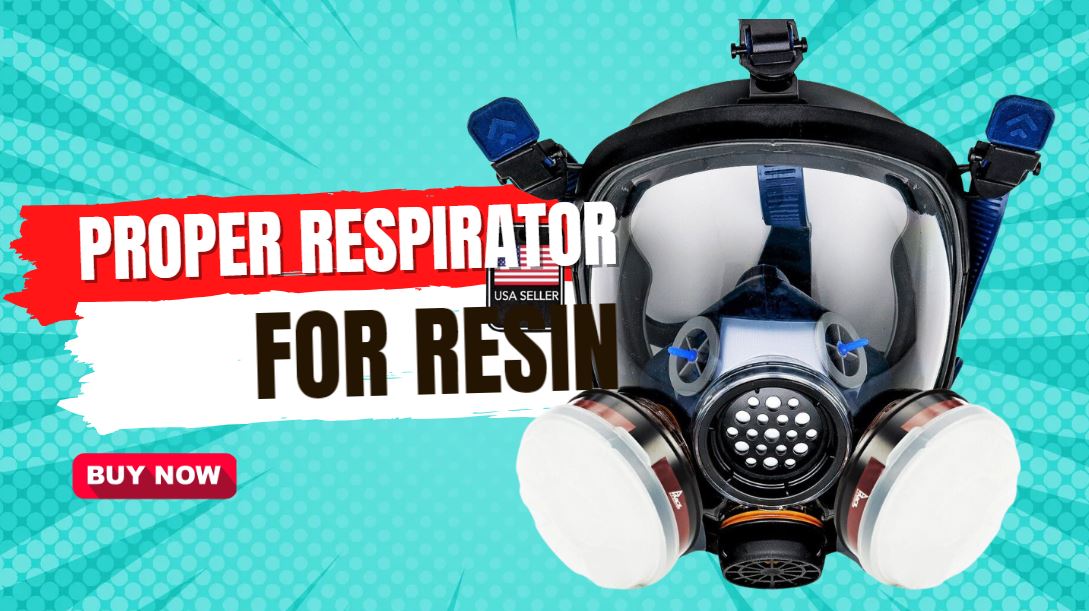
Uncured resin can be absorbed through the skin, leading to potential irritation or allergic reactions.
Wearing appropriate personal protective equipment, such as gloves, is essential to prevent direct contact.
In case of skin exposure, it’s important to promptly wash the affected area with soap and water. Never use chemicals to remove resin.
No, not all resins are equally toxic or non toxic. Epoxy & UV resin formulations often have lower levels of volatile organic compounds (VOCs) compared to a polyester resin. These resins are less likely to contain hazardous components.
Always check the safety data sheets (SDS) provided by manufacturers for specific product information.
If you cannot find the SDS for the brand you want to use, then contact them. If they cannot provide it, then do not use that resin.
When used according to safety guidelines, the risk of long-term health effects from resin exposure is minimal.
However, prolonged and repeated exposure to uncured resin or its components may pose health risks.
It’s crucial to prioritize safety, use protective equipment, and seek medical attention if you experience persistent health issues related to resin use.
In general, when companies label their resin products as “non-toxic,” they are likely referring to the fully cured state of the resin.
Once the resin has completed the curing process, it is considered safe for common uses, such as crafting or coating surfaces. In this cured state, the resin is often inert and does not pose significant health risks.
However, during the application and curing process, some resins may release fumes or vapors that could be irritating or potentially harmful if inhaled in excessive quantities.
This is why companies recommend safety precautions, including proper ventilation and the use of personal protective equipment such as masks, gloves, and goggles.
So, it wouldn’t necessarily be accurate to say they are “lying” when claiming a resin is non-toxic. Instead, it’s crucial to understand the context in which the term “non-toxic” is used.
It typically refers to the safety of the fully cured product. The precautions and safety measures advised by companies are intended to address any potential risks associated with the uncured or liquid state of the resin.
To make an informed decision about using a specific resin product, it’s essential to read and follow the manufacturer’s instructions, including any safety guidelines provided in the product documentation.
If you have specific health concerns or questions about a particular resin product, you may also reach out to the manufacturer for clarification.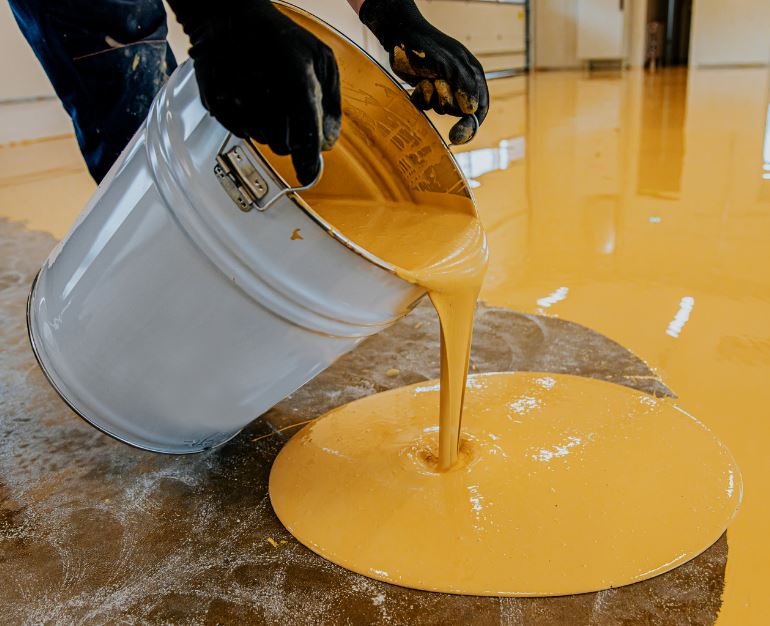
Non Toxic Claims By Resin Brands
Companies may label their resin products as “non-toxic” because, when fully cured, the resin is generally considered safe for common uses like crafting, coating, or encapsulating.
However, the need for wearing a mask during the application process, especially when working with uncured or liquid resin, is typically due to the potential release of fumes and the presence of certain components that can be irritating or harmful when inhaled.
When I was just learning how to work with resin many year ago, the first time I did not even know about resin safety. I used it without any proper respirator or ppe. Even got it on my hands and crafting supplies. I know better now!
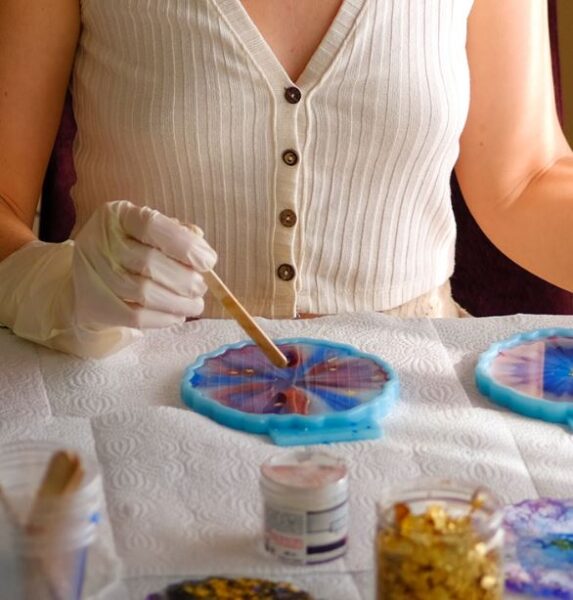
Here are a few reasons why companies may recommend wearing a mask despite labeling their resin as non-toxic:
1. Fumes during Curing:
The curing process of resin, especially epoxy resin, can release vapors or fumes. These fumes may contain volatile organic compounds (VOCs) or other components that, while not toxic in the cured state, can be irritating or harmful when inhaled during the application and curing phase.
2. Sensitivity and Allergies:
Some individuals may be more sensitive or allergic to certain components in resin. Wearing a mask helps reduce the risk of inhaling particles or fumes that could trigger respiratory irritation or allergic reactions.
3. Precautionary Measures:
Companies often provide general safety guidelines so that users take proper precautions. Wearing a mask is a standard safety measure to minimize the risk of inhaling airborne particles, even if the overall toxicity of the resin is low.
4. Regulatory Compliance:
Companies might include such recommendations to align with safety regulations and standards. Advising the use of personal protective equipment, including masks, is a common practice in the industry.
It’s important for users to follow the manufacturer’s instructions and safety guidelines when working with any resin product.
Proper ventilation, the use of personal protective equipment, and using safety measures help give you a safe working environment. Even when dealing with products labeled as non-toxic.
Users with specific health concerns or sensitivities should consult the safety data sheet (SDS) provided by the manufacturer. If necessary, seek advice from a healthcare professional.
Best Non Toxic Resins
In this section, we’re taking a look at resin brands that say their products are non-toxic. These resins are the most popular brands that crafters use and have their data safety sheets easily accessible.
1. ArtResin
ArtResin is a popular brand in the resin art community that explicitly claims to be non-toxic.
Taking an active stance, ArtResin actively positions itself as a premier epoxy resin crafted specifically for a diverse array of artistic applications such as resin art, coating, and casting.
The brand emphasizes its low odor and low VOC (volatile organic compounds) formula, contributing to a safer and more enjoyable crafting experience. See our ArtResin Review

2. Craft Resin
Craft Resin is another brand that prominently claims to offer a non-toxic epoxy resin solution for crafters.
Tailored for a range of artistic applications, Craft Resin is known for its self-leveling properties, crystal-clear finish, and low odor during the curing process.
The brand emphasizes its commitment to user safety, promoting a formulation that is free from harmful fumes and solvents. It made our list of the best resins for crafts.
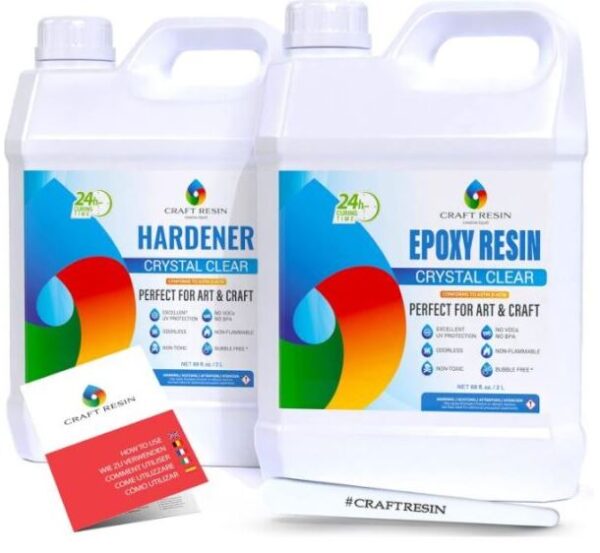
Sources About Using Resin
The U.S. Food and Drug Administration (FDA) primarily regulates substances that may come into direct contact with food, drugs, and medical devices.
As such, the FDA may not provide specific information on resins used in crafting, art, or other non-food-related applications. However, they do provide guidance on materials and substances that may come into contact with food. See our guide: Epoxy Resin Food Safe
If you are specifically looking for information on the FDA’s regulation of resins, you may want to explore the FDA’s website for indirect food additives, polymers, and other related topics. Here are some general steps to find relevant information:
1. FDA’s Website:
Visit the official FDA website and use the search bar to look for specific information on resins or polymers.
Remember, while the FDA primarily focuses on substances related to food safety, it may not cover all aspects of resins used in non-food applications, such as art or crafting.
2. OSHA
The Occupational Safety and Health Administration (OSHA) is a federal agency within the United States Department of Labor. OSHA is responsible for establishing and enforcing safety and health regulations.
While OSHA itself does not create Safety Data Sheets (SDS), it mandates that manufacturers and distributors of hazardous chemicals. This includes many resin products, provide SDS to downstream users.
Therefore, OSHA plays a crucial role in setting guidelines and regulations that govern the creation and distribution of SDS for various chemical products. This helps promote workplace safety and health.
Alternatives To Using Resin
If you find that working with resin may not align with your safety preferences or health considerations, there are several non-toxic alternatives available for your crafting ideas.
Exploring these alternatives allows you to maintain your creative pursuits while prioritizing safety and well-being in your crafting practices.
Although nothing really compares to the high shine, durability and ease of use that resin gives.Here are some alternatives to try for crafting ideas. This might help spark some new ideas for you.
Mod Podge Dimensional Magic
Mod Podge Dimensional Magic is a versatile and transparent crafting medium that dries clear. It allows the colors of the underlying surface to shine through.
Specifically designed to work seamlessly with acrylic paint, dyes, pigments, and more, it provides a glossy and three-dimensional finish to various projects.
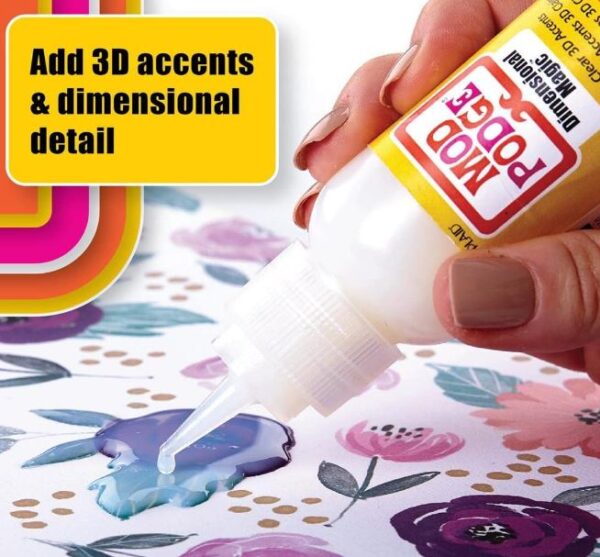
3d Crystal Lacquer
3D Crystal Lacquer is a crafting product by Sakura. It’s a dimensional, glossy finish lacquer designed to add depth and shine to artworks. Typically used in paper crafting, mixed media, or other DIY projects. Such lacquers like this can create a crystal-clear, three-dimensional effect on surfaces.
Water-Based Glazes and Sealers:
Water-based glazes and sealers provide a non-toxic option for protecting and finishing painted or sculpted surfaces. These are formulated without the use of harmful solvents.
Air-Dry Clay:
And while not even close to resin, Air-dry clay is a versatile and easy-to-use alternative for sculpting and crafting.
If you are making jewelry and smaller pieces, you might want to give it a try instead of using resin.
It doesn’t require curing in an oven or exposure to chemicals, making it a non-toxic option suitable for various projects.
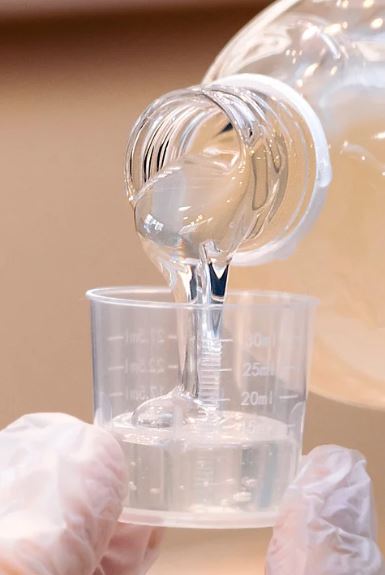
In Closing: As you embark on your creative endeavors, we hope this information empowers you to make informed choices that align with your safety priorities.
Whether you’re a seasoned resin artist or just starting out, remember that your crafting journey is uniquely yours. Happy crafting, and thanks again for reading!
